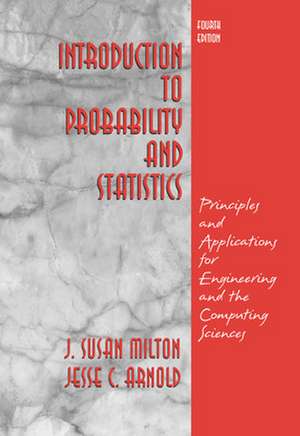Introduction to Probability and Statistics: Principles and Applications for Engineering and the Computing Sciences
Autor J. Susan Milton, Jesse Arnolden Limba Engleză Hardback – 16 noi 2002
Preț: 2053.64 lei
Preț vechi: 2256.75 lei
-9% Nou
Puncte Express: 3080
Preț estimativ în valută:
392.95€ • 411.38$ • 325.15£
392.95€ • 411.38$ • 325.15£
Carte tipărită la comandă
Livrare economică 05-19 aprilie
Preluare comenzi: 021 569.72.76
Specificații
ISBN-13: 9780072468366
ISBN-10: 007246836X
Pagini: 816
Dimensiuni: 168 x 241 x 36 mm
Greutate: 1.18 kg
Ediția:Revised
Editura: McGraw Hill Education
Colecția McGraw-Hill
Locul publicării:United States
ISBN-10: 007246836X
Pagini: 816
Dimensiuni: 168 x 241 x 36 mm
Greutate: 1.18 kg
Ediția:Revised
Editura: McGraw Hill Education
Colecția McGraw-Hill
Locul publicării:United States
